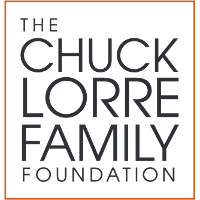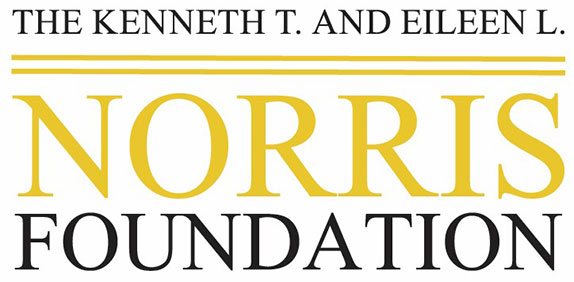Ella At 100: Celebrating The Artistry Of Ella Fitzgerald
On View - Apr 25, 2017 - Oct 05, 2017
The GRAMMY Museum celebrates the life, music and charitable legacy of 13-time GRAMMY-winning jazz singer, and Recording Academy Lifetime Achievement Award recipient, Ella Fitzgerald with Ella At 100: Celebrating the Artistry of Ella Fitzgerald. The exhibit opens April 25, on what would have been the late jazz icon’s 100th birthday, and celebrates 100 years of Fitzgerald’s lasting legacy through rare recordings, photos, and one-of-a-kind stage costumes.
Even though Ella has been gone since 1996, we still abide by her motto: “Just don’t give up doing what you love to do.”
– Fran Morris-Rosman, Executive Director of the Ella Fitzgerald Charitable Foundation
Items on display in this special exhibit will include:
- Fitzgerald’s Grammy Awards, Including The First She Ever Won, Which Made Her The First African-American Grammy Award-Winning Artist
- Wardrobe Pieces Such As Her Well-Known Don Loper Beaded Gown
- Photographs And Performance Footage From Various Stages Of Fitzgerald’s Career
- Rare Sheet Music And Records
- Telegram Correspondences
- And Much More
This exhibit will be a well-deserved tribute to a woman whose legacy has solidified her as the beloved ‘First Lady of Song.’ We look forward to educating visitors of all ages on Ella’s legacy.
– Nwaka Onwusa, GRAMMY Museum Curator
In conjunction with the Ella Fitzgerald Centennial, The First Lady Of Song’s longtime labels Verve Records and UMe will release several exciting albums throughout the year and into 2018. On April 21, 100 of her most popular songs, including “Summertime,” “A-Tisket, A-Tasket,” “(I Love You) For Sentimental Reasons,” “I’ve Got You Under My Skin,” and “Mack The Knife,” will be released as a new career-spanning 4CD box set titled 100 Songs For A Centennial. Also on that day, her revered album, Ella Fitzgerald Sings The George & Ira Gershwin Song Books, highly regarded as the pinnacle of her acclaimed Song Book series and a major cornerstone of 20th century recorded popular music, will be released as a limited edition vinyl box set. Later this year, all of Ella Fitzgerald & Louis Armstrong’s beloved duets will be released as Cheek To Cheek: The Complete Ella & Louis Duets. Further on, Verve will release a new album featuring Fitzgerald’s classic vocal recordings accompanied by new orchestral arrangements by the London Symphony Orchestra. Many more releases are in the works to soundtrack Ella 100 all year long.
Ella at 100: Celebrating the Artistry of Ella Fitzgerald will be on display in the GRAMMY Museum’s Mike Curb Gallery on the fourth floor from April 25, 2017 through Sept. 10, 2017. This exhibit marks the fourth GRAMMY Museum exhibit celebrating jazz music and artists. Previous exhibits include Herman Leonard: Documenting the Giants of Jazz, Blue Note Records: The Finest in Jazz, and Count Basie: The King of Swing.
ABOUT ELLA FITZGERALD
Ella Jane Fitzgerald was born in Newport News, Va., on April 25, 1917. Fitzgerald got her start as a singer in 1934 when her name was pulled in a weekly drawing at the Apollo Theatre and she won the opportunity to compete in Amateur Night. Fitzgerald went to the theater that night planning to dance, but made the last minute decision to sing. She quickly quieted the audience, and by the song’s end they were demanding an encore. Offstage, and away from people, she knew well, Fitzgerald was shy and reserved. She was self-conscious about her appearance, and for a while even doubted the extent of her abilities. Onstage, however, she was surprised to find she had no fear. She felt at home in the spotlight.
In mid-1936, Fitzgerald made her first recording, it was with the great band leader, Chick Webb. “Love and Kisses” was released under the Decca label, with moderate success. By this time she was performing at the prestigious Harlem’s Savoy Ballroom, often referred to as “The World’s Most Famous Ballroom.” Shortly after, Fitzgerald began singing a rendition of Sam Coslow’s hit, “(If You Can’t Sing It) You Have to Swing It (Mr. Paganini).” During this time, the era of big swing bands was shifting, and the focus was turning more toward bebop. Fitzgerald played with the new style, often using her voice to take on the role of another horn in the band. “You Have to Swing It” was one of the first times she began experimenting with scat singing, and her improvisation and vocalization thrilled fans. Throughout her career, Fitzgerald would master scat singing, turning it into a form of art. In 1938, at the age of 21, Fitzgerald recorded a playful original version of the nursery rhyme, “A-Tisket, A-Tasket.” The album sold 1 million copies, hit No. 1, and stayed on the pop charts for 17 weeks. Suddenly, Ella Fitzgerald was famous.
Fitzgerald joined the Jazz at the Philharmonic tour, worked with Louis Armstrong on several albums and began producing her brilliant songbook series under the watchful eye and discerning ear of her manager, L.A. native Norman Granz. From 1956-1964, she recorded covers of other musicians’ albums, including those by Cole Porter, Duke Ellington, the Gershwins, Johnny Mercer, Irving Berlin, and Rodgers and Hart. The series was wildly popular, both with Fitzgerald’s fans and the artists she covered. She also began appearing on television variety shows. She quickly became a favorite and frequent guest on numerous programs, including “The Bing Crosby Show,” “The Dinah Shore Show,” “The Frank Sinatra Show,” “The Ed Sullivan Show,” “The Tonight Show,” “The Nat King Cole Show,” “The Andy Williams Show,” and “The Dean Martin Show.”
Fitzgerald continued to work as hard as she had early on in her career, despite the ill effects on her health. She toured all over the world, sometimes performing two shows a day in cities hundreds of miles apart. In 1974, Fitzgerald spent a legendary two weeks performing in New York with Frank Sinatra and Count Basie. Still going strong five years later, she was inducted into the Down Beat magazine Hall of Fame, and received Kennedy Center Honors for her continuing contributions to the arts.
Outside of the arts, Fitzgerald had a deep concern for children and those in need. Though this aspect of her life was rarely publicized, she frequently made generous donations to organizations for disadvantaged youth, and the continuation of these contributions was part of the driving force that prevented her from slowing down.
In 1987, U.S. President Ronald Reagan awarded her the National Medal of Arts. It was one of her most prized moments. France followed suit several years later, presenting her with their Commander of Arts and Letters award, while Yale, Dartmouth and several other universities bestowed Fitzgerald with honorary doctorates.
On June 15, 1996, Ella Fitzgerald died in her Beverly Hills home from complications of diabetes. Hours later, signs of remembrance began to appear all over the world. A wreath of white flowers stood next to her star on the Hollywood Walk of Fame, and a marquee outside the Hollywood Bowl theater read, “Ella, we will miss you.”
Ella Fitzgerald won 13 GRAMMY Awards, a Recording Academy Lifetime Achievement Award, and has eight recordings inducted into the GRAMMY Hall Of Fame. She holds the distinction as the first African-American to ever receive a GRAMMY Award.
To learn more about Ella Fitzgerald and her charitable legacy, please visit www.ellafitzgeraldfoundation.org.
View
All Past Exhibits
Subscribe
Please provide a valid email address
Please select at least one option above
Thanks for subscribing!






















